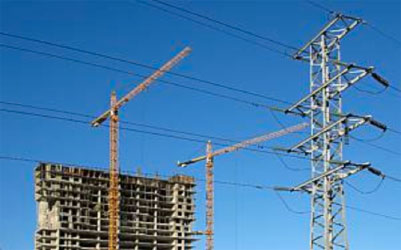Electrical Safety – Overhead Power Lines
Electrocution remains a major cause of deaths in construction. Part of the reason is that at home and on the job we take electricity for granted. This can lead to familiarity and a false sense of security. Relying on the benefits of electricity, we may forget its hazards.
Historically, electrocution accounts for about 20% of all fatalities in construction. Some people think that only cranes are involved in overhead contact with electrical power lines. But backhoes, dump trucks, and low-tech equipment like ladders and rolling scaffolds have also been involved. Nor does it take high-tension lines to kill construction people. Too many fatalities involve residential service.

Precautions to Minimize the Risk of Electrocution:
Conduct initial and daily surveys of the worksite for overhead power lines. LOOK UP!
BEST SAFETY PRACTICE: NEVER GET CLOSER THAN 10 FEET TO AN OVERHEAD POWER LINE!
-
If you should be in a vehicle that is in contact with an overhead power line, DON’T LEAVE THE VEHICLE. As long as you stay inside and avoid touching metal on the vehicle, you may avoid an electrical hazard. If you need to get out to summon help or because of fire, jump out without touching any wires or the machine, keep your feet together, and hop to safety.
-
Avoid storing materials under or near overhead power lines.
-
If using a crane/equipment near lines rated at 50,000 volts (50kv) or less, minimum distance between
the energized lines and any part of the crane (boom, load line, etc.) should be at least 10 feet.
-
If using a crane/equipment near energized lines rated at 50,000 volts (50kv) or more, minimum distance between energized lines and any part of the crane should be at least 10 feet plus 0.4 inch for each 1,000 volts over 50,000 volts.
Safety First, Avoid the Worst!
Download flyer: STOTW_41_ElectricalSafety-OverheadPowerLines.pdf (110.71 kb)

